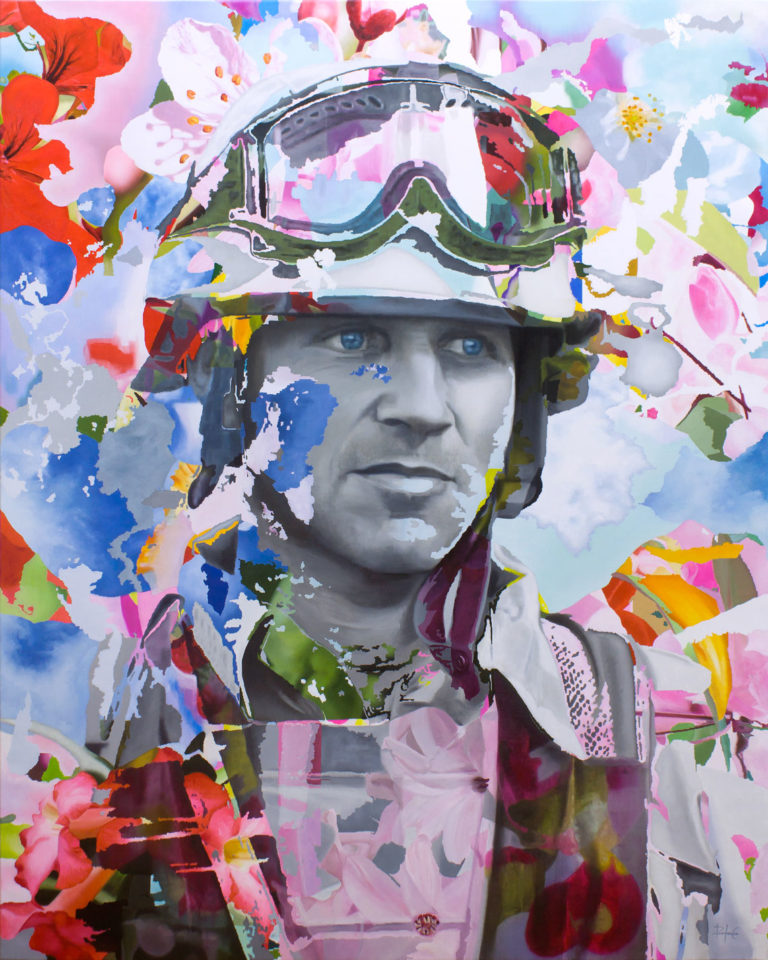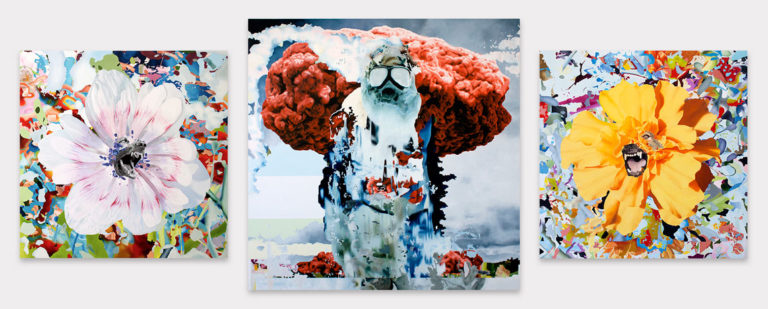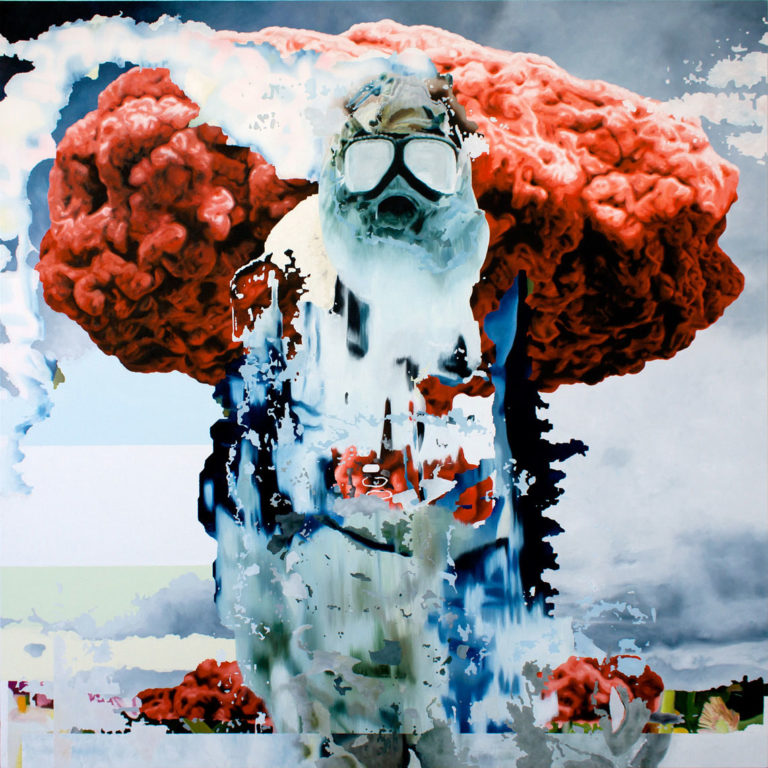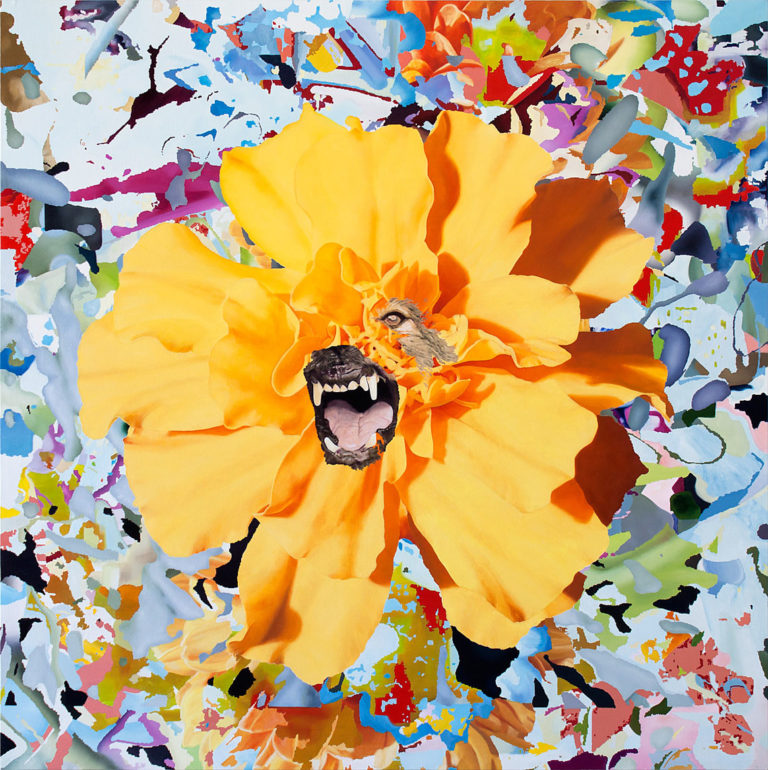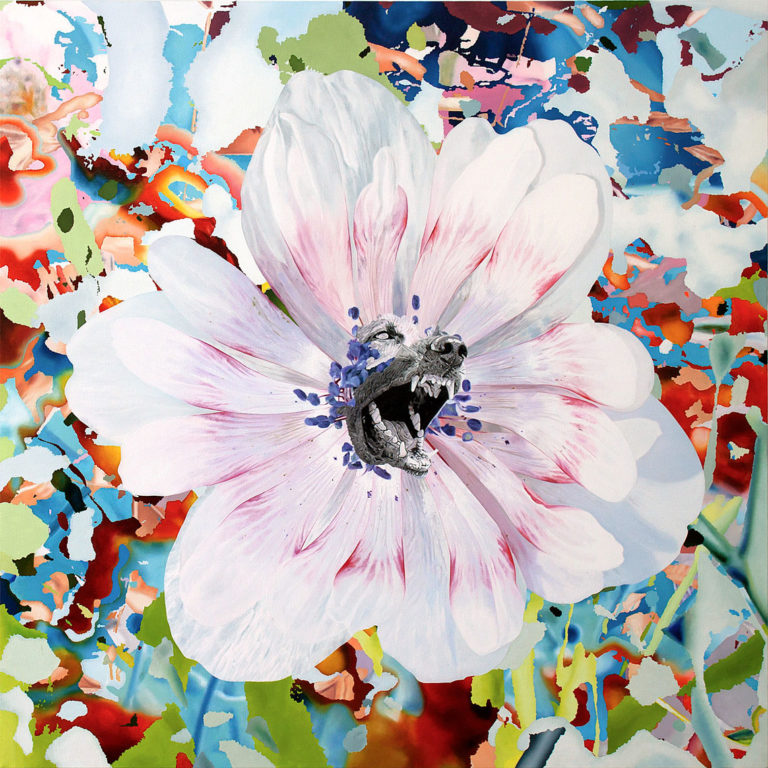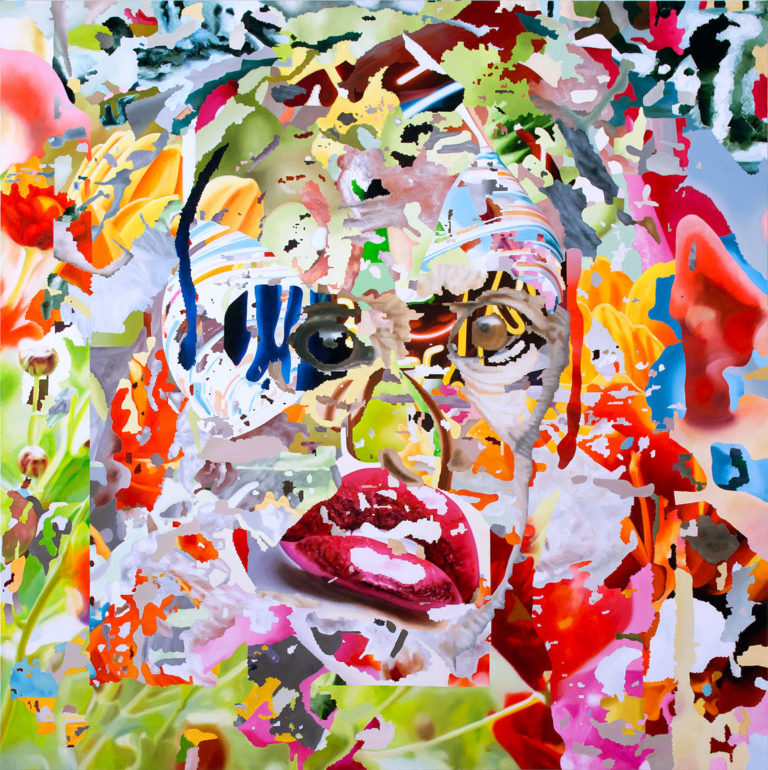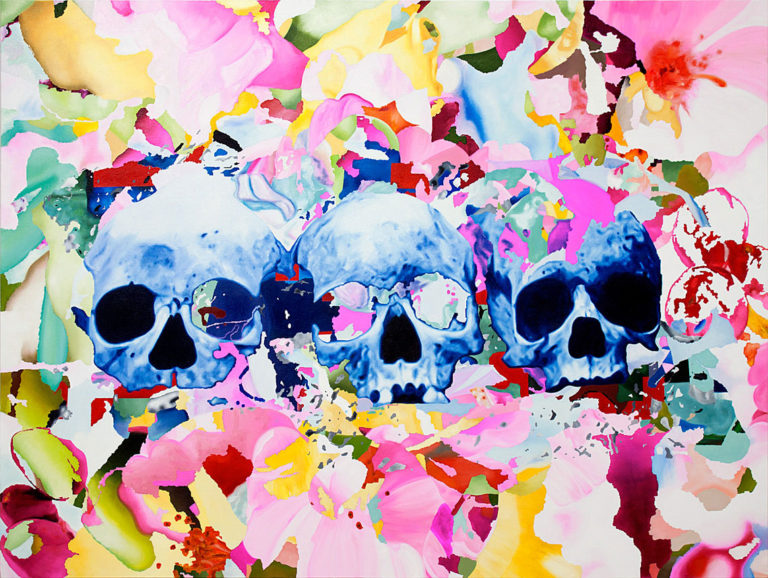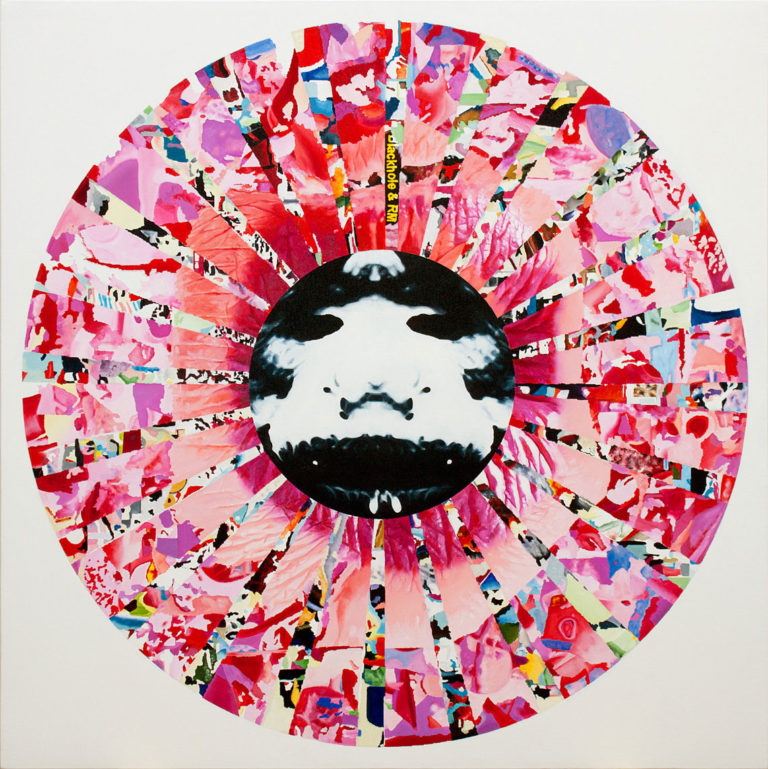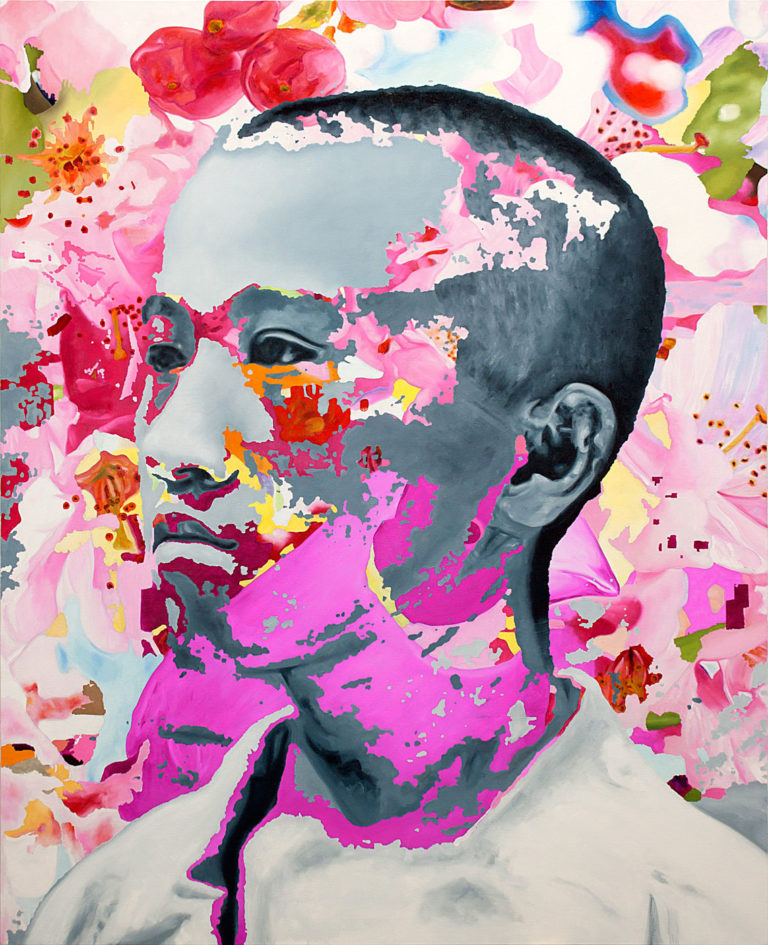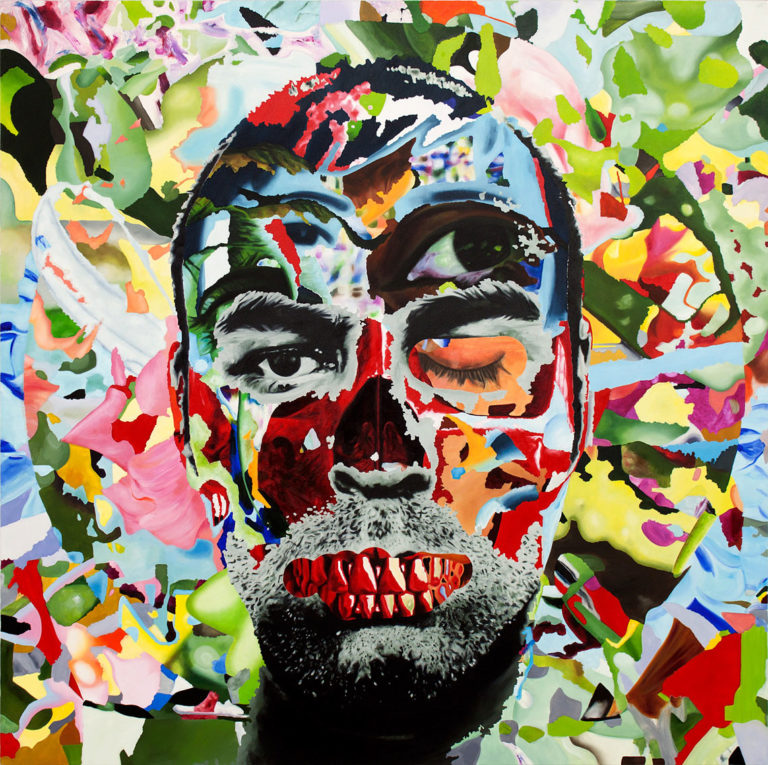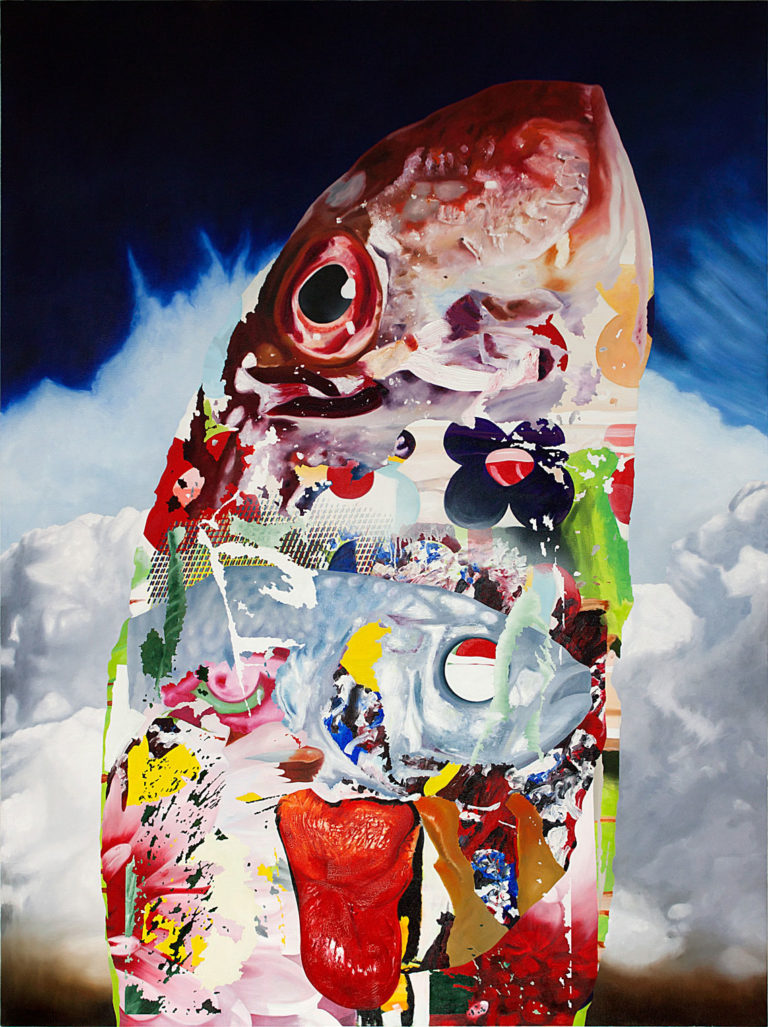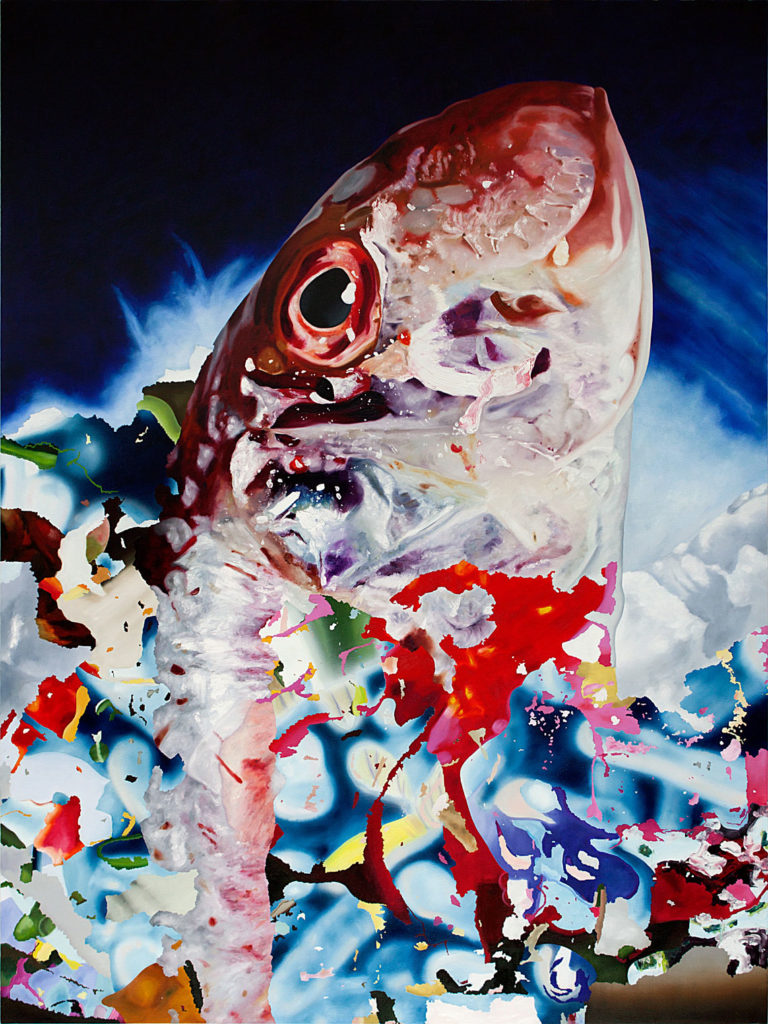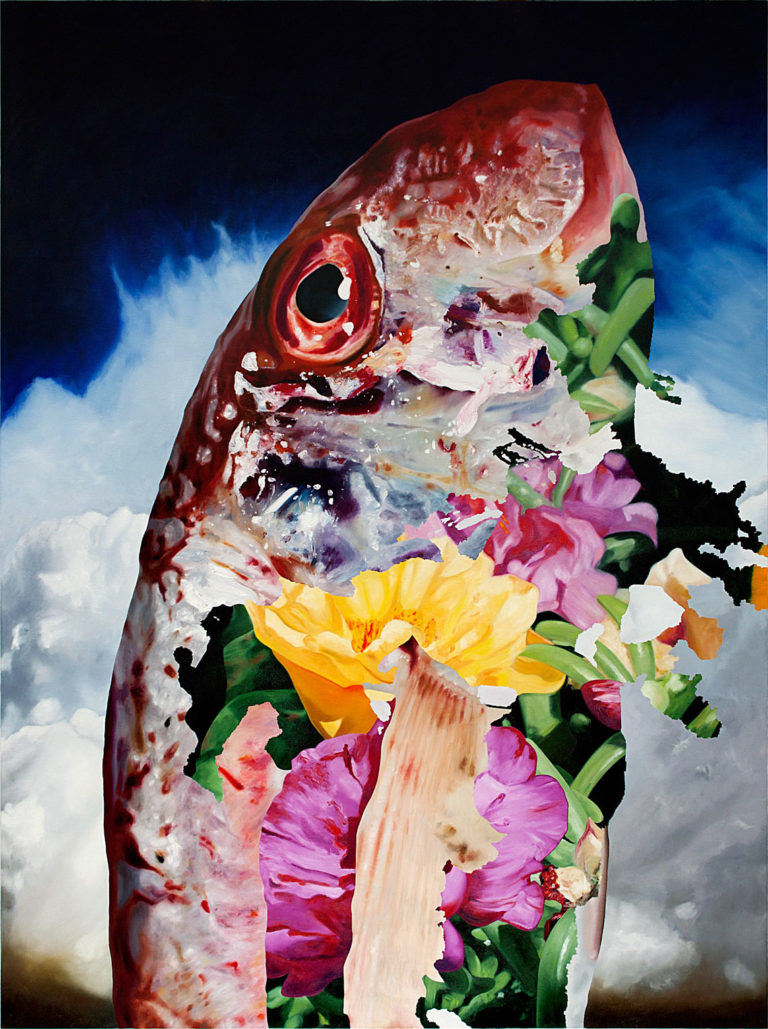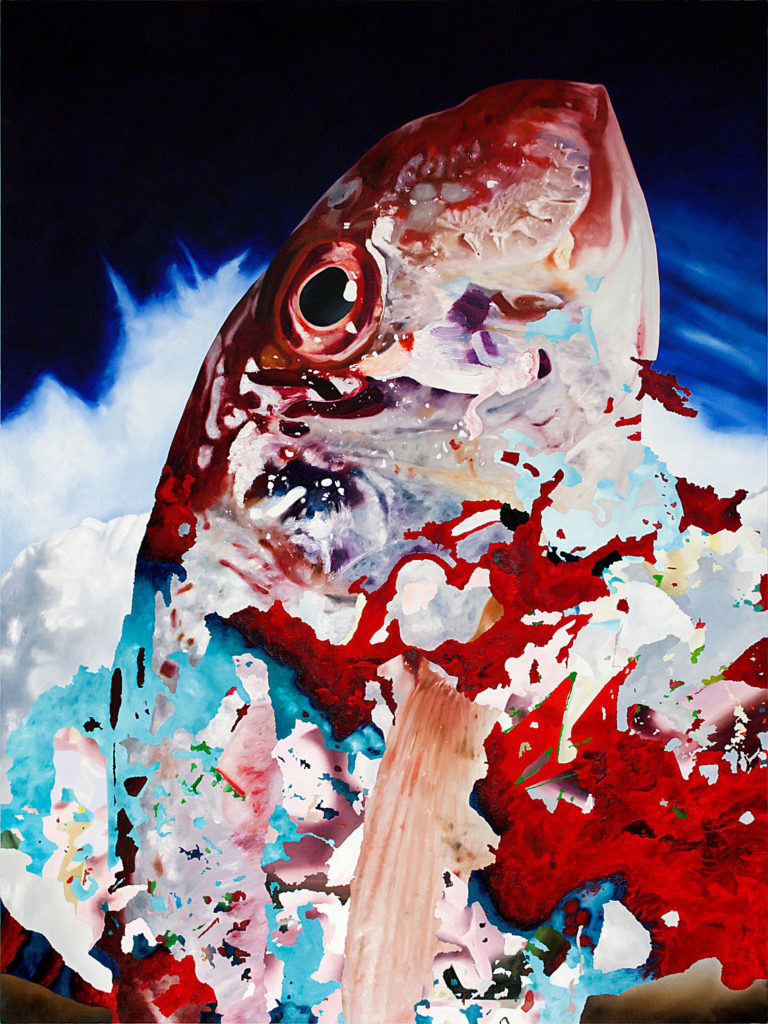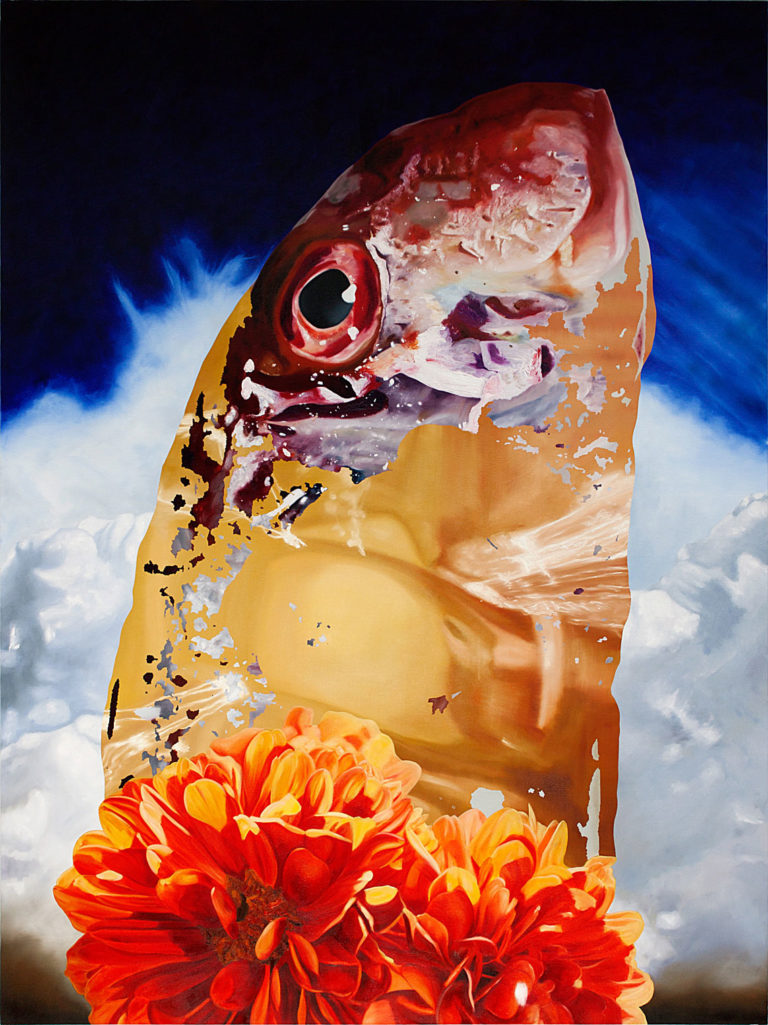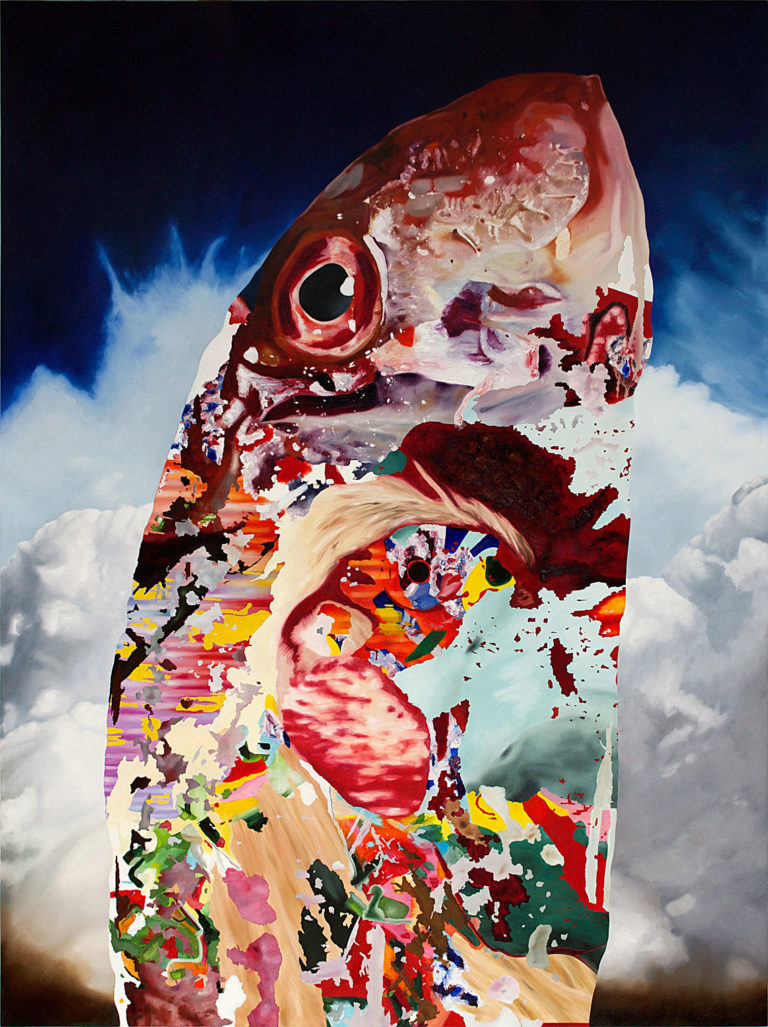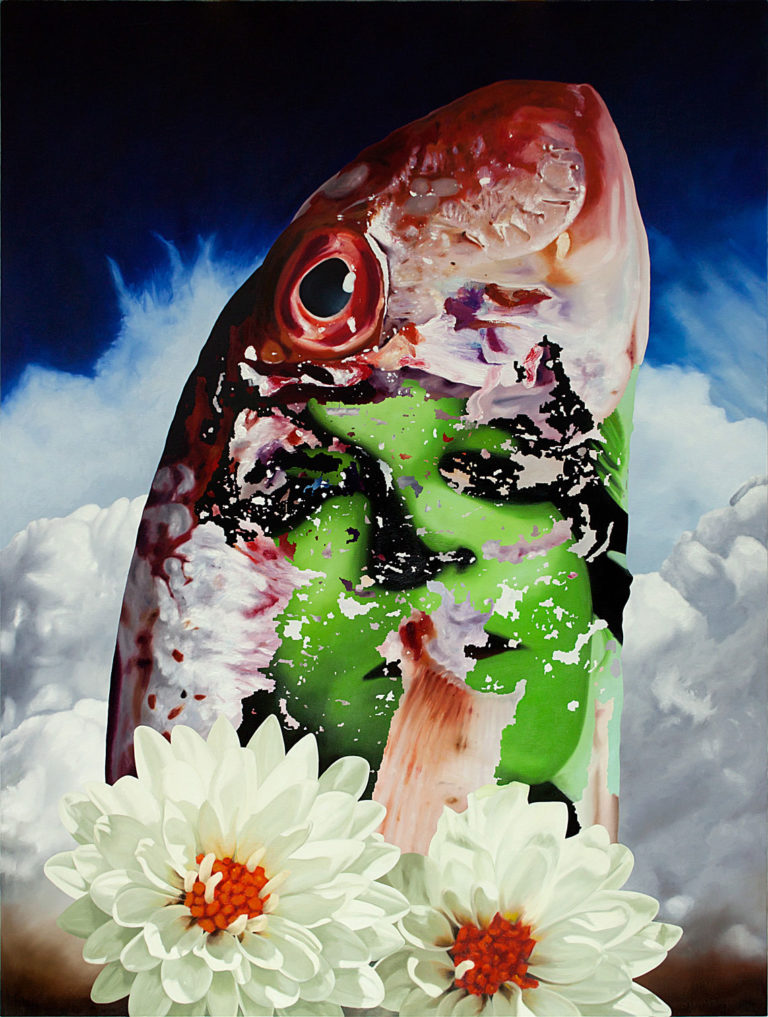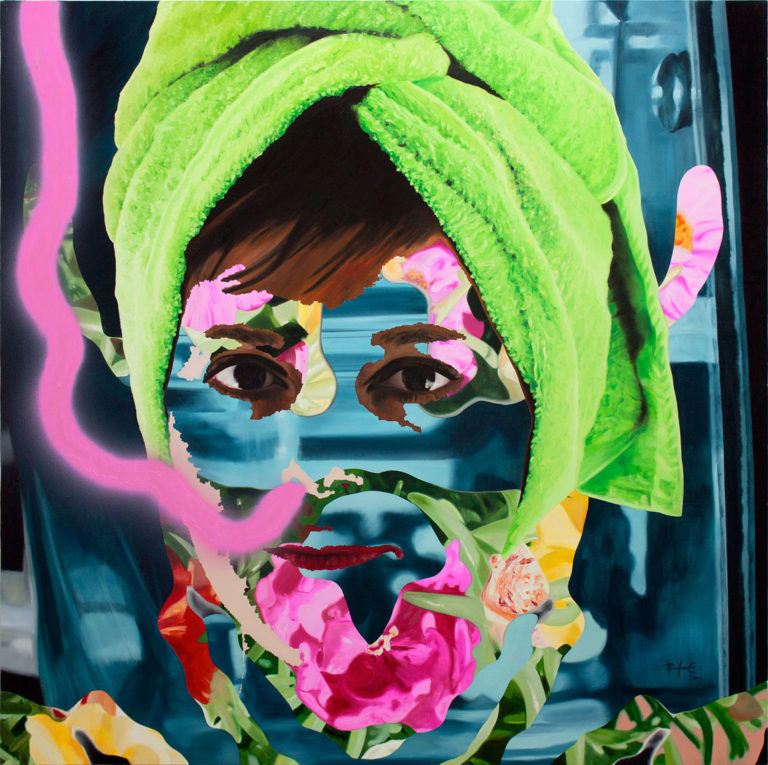Toxic Paradise shows the decontextualization of shapes and contents as a mechanism of destruction of an idealized society that is immersed in their complexes and contradictions, as if it were a Garden of Eden, psychotropic and hallucinogen, where reality becomes subjective and the unreality objective.
This representation is developed through opposing elements, dual elements reflecting our desires and uncertainties; life and death, superficiality and depth, instinct and the visceral in front of the logic and reason, time as self-destruct mechanism against memory as reconstruction mechanism, or the acceptance of diversity versus thought unique and totalitarian.
Some of these basic approaches are represented technically in the process of creation, for example, the color, the imposition of chromatic load, which represents the maximum acceptance of diversity, a diversity that manifests itself through the light as a fundamental and vital element of this diversification of shapes and the contents. In addition, we have the juxtaposition of independent planes, and this juxtaposition of the shape and the contour represents the inexorable advancement of time. The time breaks down the form, destroys, deprives it of its initial content to get to make it unrecognizable. This is the natural process of life and death in which the driver of this process is time, and that goes from micro to macro. Then we have the memory as a catalyst in this space time and therefore allows us to reconstruct our present and our past. In conclusion, this juxtaposition of planes that pass through different sizes and shapes represents the time and memory.
And last and as a result of these two structural and compositional approaches, we obtain a visual communication and visual codes defragmented, broken, where the images again and again adjust the gears of our perception and set our vision focus on things and on the elements that comprise it.
